The War on Buckthorn at the Brake woods continued with a recent battle in the south corner. Just a warning–these are not pretty pictures! Armed with a chain saw, hand saw, loppers, Round-up, and gloves, Chris and I went to work. He’s the chainsaw man, I’m the Round-up stump painter, and we both load the pickup bed with the piles of brush that need to be hauled away. Of course, I was so excited about attacking this patch of undesirables that I forgot to take a ‘before’ picture!
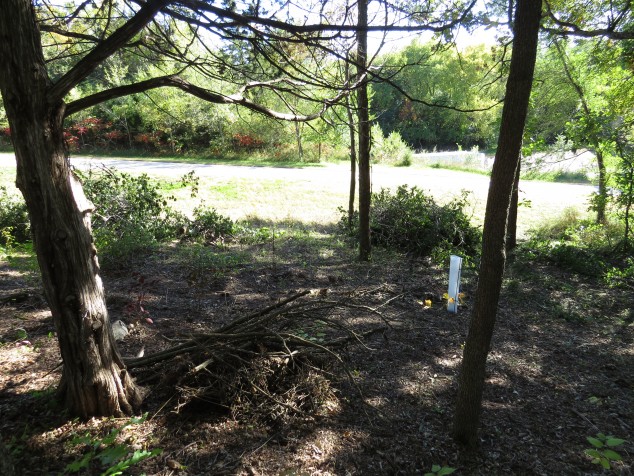 But this is what it looks like right next to the cleared area, which will give you an idea of what it looked like ‘before.’
But this is what it looks like right next to the cleared area, which will give you an idea of what it looked like ‘before.’
And this is another section of the woods where the buckthorn was cut down but not yet removed. It is dense, prickly, nasty, invasive stuff.
Every square foot of our woods looked like that when we moved to our little plot of land above the river. Five years of battles against the buckthorn, area by area, has made a huge difference in the way our woods look now. As the buckthorn came out, Chris planted new things. He mulched paths through the woods, planting trees, shrubs, ground covers and perennials along the way.
He built a winding dry stream bed of rocks that can be ‘turned on’ to be a babbling brook.
He planted a small grove of Hazelnut shrubs that he grew from seeds. American hazelnuts are native to this area as an understory shrub or small tree. The nuts are small with thick shells, are high in protein and vitamins, and are highly favored by squirrels, birds, and other wildlife. European hazelnuts–the kind you get at the store–are not hardy in this area.
We left a fallen tree for interest and as a dividing line between the more cultivated area at the top of the hill and the ‘wilder’ planted hillside below. The white plastic cylinders protect oak seedlings from rabbits and deer.
Low grow sumac helps prevent erosion on the sandy hillside. Cedars, oaks, and honeysuckle seed themselves and are free to grow without the suffocating buckthorn. Raspberries, gooseberries, and many woodland perennials, including Jack in the Pulpit, have reappeared in the cleared areas.
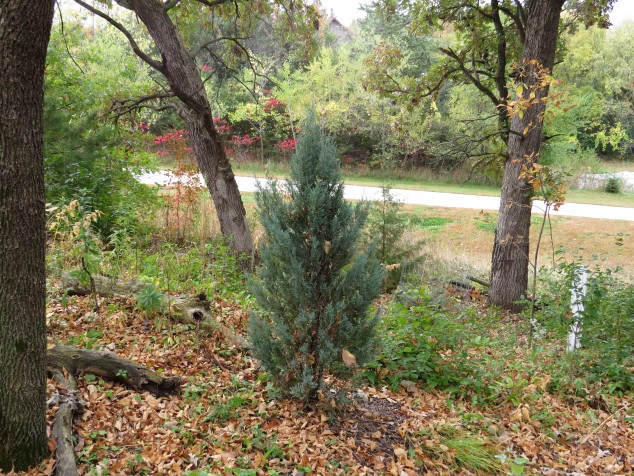 Tamba and I enjoy our daily strolls through the woods. Every day is different–new shoots, new flowers, areas of weeds to be tackled, or the first red leaf of fall. You can feel the vibrancy!
Tamba and I enjoy our daily strolls through the woods. Every day is different–new shoots, new flowers, areas of weeds to be tackled, or the first red leaf of fall. You can feel the vibrancy!
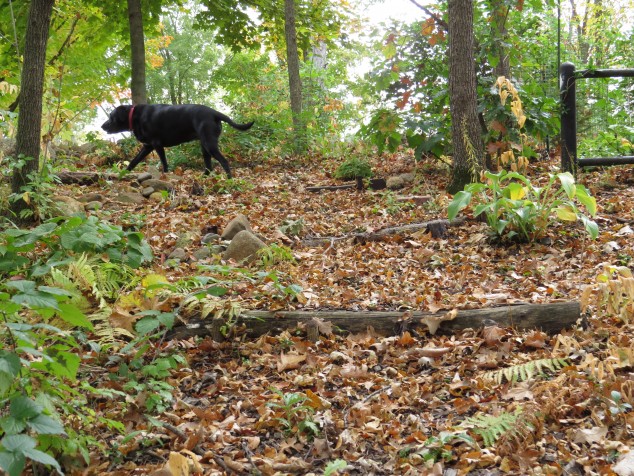 The restoration of our woods is an ongoing project. Getting rid of the mature buckthorn is just the beginning–pulling the seedlings that grow from the years of seed production is the part that really tries one’s patience. A cleared area can be covered with buckthorn shrubs four to five feet high in a year or two if diligence is not taken to pull the young seedlings. But it does get better after a number of years! Seeing the woods come alive again with native plants along with what Chris has planted, has been such a joy! We see the unfolding of life, the glory of flowers and fruit, and the colors and strengths of the seasons–not the snuffing out of life by the buckthorn.
The restoration of our woods is an ongoing project. Getting rid of the mature buckthorn is just the beginning–pulling the seedlings that grow from the years of seed production is the part that really tries one’s patience. A cleared area can be covered with buckthorn shrubs four to five feet high in a year or two if diligence is not taken to pull the young seedlings. But it does get better after a number of years! Seeing the woods come alive again with native plants along with what Chris has planted, has been such a joy! We see the unfolding of life, the glory of flowers and fruit, and the colors and strengths of the seasons–not the snuffing out of life by the buckthorn.
This is a story of hard work, years of time, patience, and perseverance. It is a story of hope, new growth, restoration, and redemption. It is a story of enjoyment, peacefulness, beauty, and bounty. It is the story of love and life.
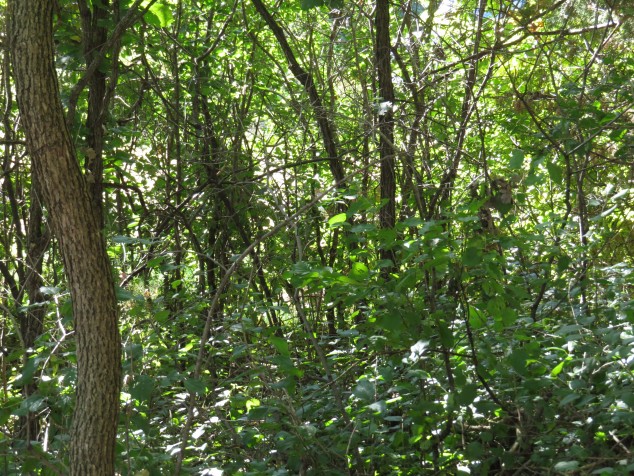
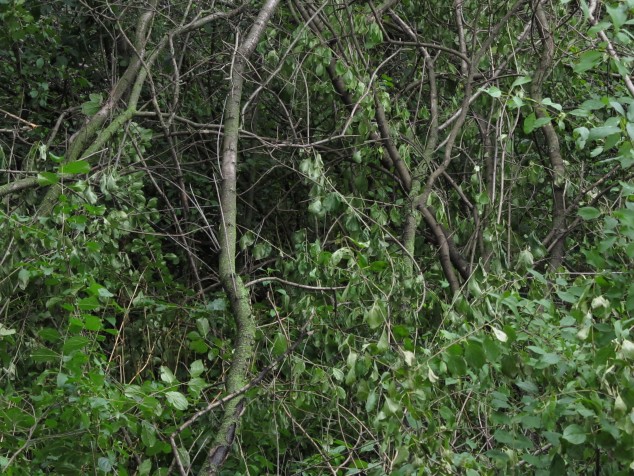
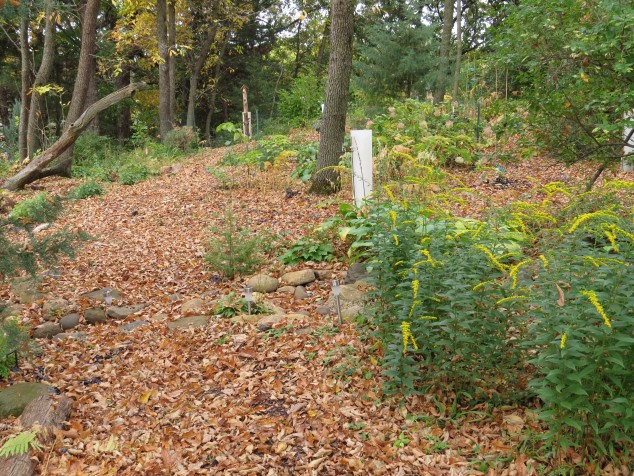
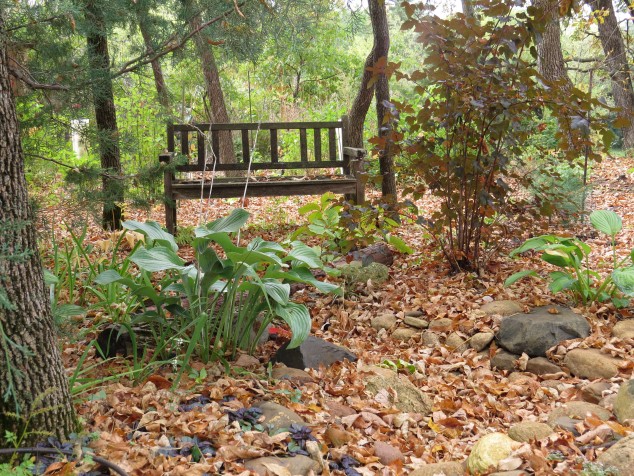
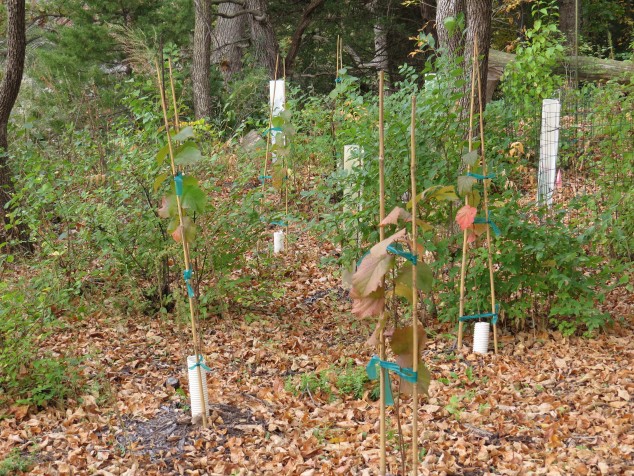
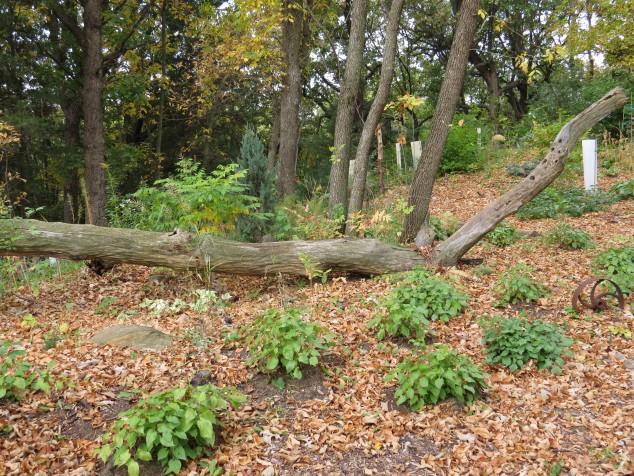
Leave a Reply